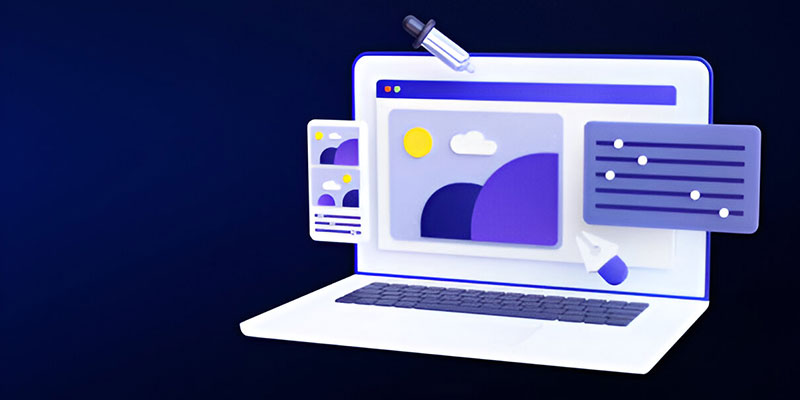How Web Design Shapes User Perception and Engagement

Featured Image: iStock/Tatyana Yagudina
Do you recall when you came across a website that had a sluggish design, poor navigation, no scroll bar, and a slow loading speed? You had to close that website and search your query on another much better site.
Well, the reason you did that is because the website owner didn’t pay attention to its design and how it could impact user experience or maybe he hired a poor designer and implemented poor SEO practices. In the long run, it could have dire consequences for his business if they don’t rectify this mistake.
Good website design is critical in increasing customer loyalty. Nowadays, websites are often the initial point of contact between businesses and their potential clients. So today let’s understand how website design affects user experience and how we can correct it.
What is Web Design’s Impact on Customers?
It is worth noting that a website’s design and layout can significantly influence the user experience. Poor design creates confusion and frustration, while good design makes a website easier to navigate for finding a product.
A website’s color scheme, layout, and font may impact customer perception. In addition, the design of negative spaces, website loading speed, typography, and professional logo design also affect customer experience.
Good design contributes to better customer satisfaction, whereas an inadequate design may lead to customer dissatisfaction.
Here are some of how web design has an impact on overall customer satisfaction.
1. Makes Your Business More Reputable and Trustworthy
Well-designed websites can significantly impact a business’s success, from boosting visibility to professionalism. For visitors to have a positive experience, a website needs to be visually appealing, functional, and navigable.
Many factors can enhance the visual appeal of a modern website, such as an attractive layout, a user-friendly navigation system, a responsive design, and an overall pleasing appearance. A positive first impression will encourage visitors to stay on the site longer and explore additional pages.
In addition, a user-friendly website can increase a company’s reputation because it shows its seriousness about its products. The visitor is also more likely to stay on a site if it is attractive and easy to navigate.
A good web design can boost SEO rankings by improving page speed, implementing appropriate meta tags, optimizing page titles, enhancing readability, building backlinks, and incorporating relevant keywords.
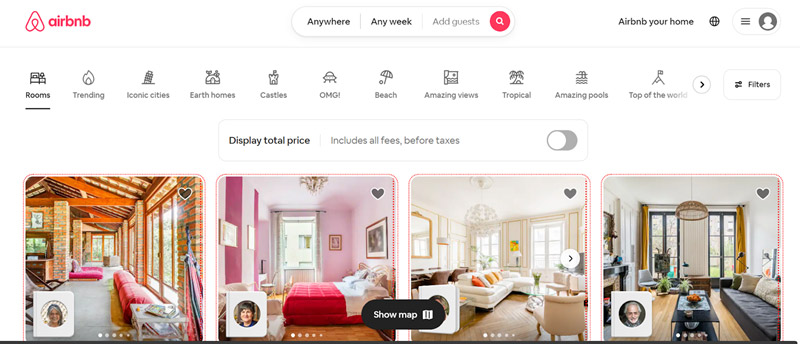
Image Source: airbnb.com
2. Provides Better User Experience
Regarding the overall customer experience, the right web design can significantly impact the user journey. It is becoming easier than ever to build a website that is easily navigable and aesthetically pleasing through innovative technologies and intuitive design practices.
An easy-to-use and well-defined navigation of a website greatly improves user experience. If you think about it, the role of UX in e-commerce conversions is integral and it’s an important factor in customer retention. To encourage users to come back again and again, they need to be able to find exactly what they need without having to go through a lot of clicks and pages.
The strategic placement of key features such as search bars may assist users in locating the information they are seeking more quickly on any page. A website that incorporates such features will significantly lower the amount of time users spend browsing aimlessly and provide users with a more positive experience.
Adding visual elements, such as videos or graphics, is another way web design can assist users in their journeys. Video and pictures engage users and offer valuable information and details about a product or service that are difficult to convey in text.
Creating unique experiences tailored specifically to your audience’s needs is easy today, thanks to the many tools and resources available to web designers who can add animations to the website.
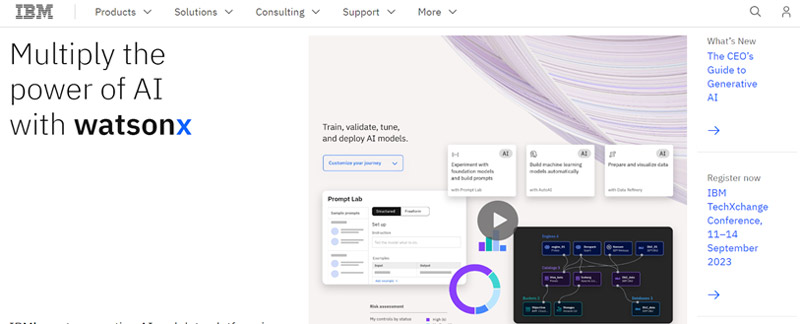
Image Source: ibm.com/us-en
3. Impacts on Customer Retention Rate
A professionally designed website is the most effective means of generating recurring customers. Visitors are more likely to stay on a well-designed website longer and explore more content that looks professional and attractive. Additionally, good web design makes it easier for brands to connect with their customers.
A website that is easy to navigate, has engaging graphics, and is up-to-date and aesthetically pleasing can help your prospects make informed choices.
Furthermore, studies have shown that a good website design increases customer loyalty by 74%. In other words, better web design could make businesses more profitable. Any business should place a high priority on an effective website design to retain customers. Companies can enhance their competitiveness by offering the best web design and ensuring customer loyalty.
Modern website development techniques, such as responsive design, help create an effective website design by ensuring that webpages are optimized for mobile devices.
Furthermore, companies should use a consistent call-to-action (CTA) on web pages to facilitate customer interaction. A company can boost its online visibility by incorporating SEO strategies into its website design.
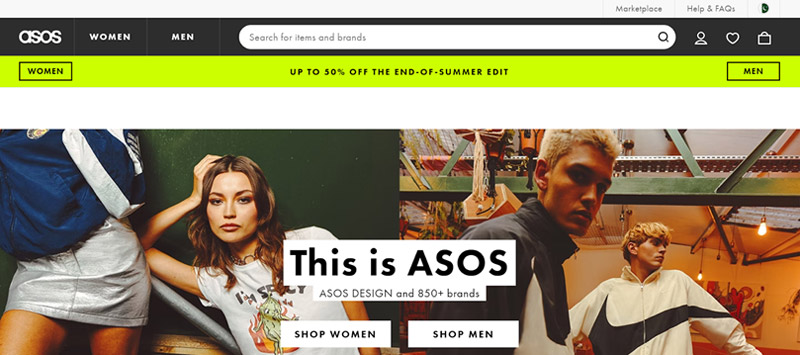
Image Source: asos.com
4. Providing Universal Access to Your Content
It is not only important that things look nice, but it is also important that they provide a positive experience for the user on all platforms. Accessibility of your website content across multiple platforms ensures smooth access and interaction for users across all devices equally.
You must optimize your website for different screen sizes and consider accessibility factors, such as alt text and loading speed. Further, you can ensure that your content is accessible on all platforms by taking the time to ensure its accessibility. Additionally, when done properly, this will result in an experience that will persist in the user’s memory.
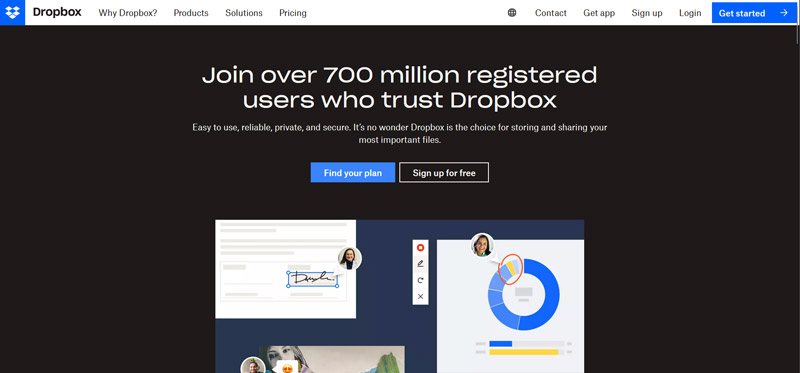
Image Source: dropbox.com
5. Gives Access to Your Content to Mobile Users
As part of good design, it is also important to consider how people interact with content using different devices. It is essential to consider all contexts when designing your content; for example, smartphone users may require different layouts or interaction points.
Further, it is important to consider how people are using the device you are considering. For example, some people may use their smartphones to access content while traveling, while others may use tablets at home. You can enhance the effectiveness and enjoyment of your content for users by understanding the context of use.
It is also a good idea to consider storytelling in web design so you can engage the visitors effectively and keep them browsing for a long time. You should consider all platforms during the design process to ensure that all users can enjoy the experience, regardless of their device.
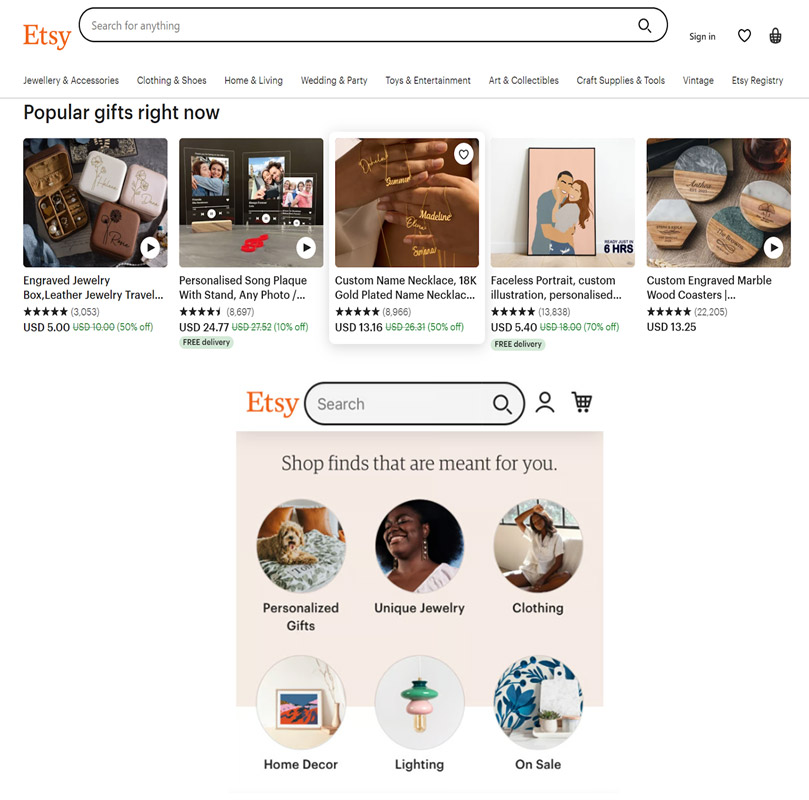
Image Source: etsy.com
How Do you Define Good Web Design?
A well-designed website balances several factors to provide a beautiful and user-friendly experience. Additionally, it is important to note that UI and UX design principles differ, and conflating them can lead to more problems.
A good web design should include the following factors.
1. A User-Friendly Interface
It is important to keep web design simple at all times. The complexity of your website may cause a feeling of confusion for your visitors, which will result in a loss of visitors to your website.
A simple and minimal design helps users navigate easily and find their desired content or product page faster; as a result, they might come back if the whole experience was good.
It is crucial to make a website as usable as possible. You can use an easy-to-read font, large buttons, and an organized layout of the menu with sub-sections that help the user find the information they want quickly.
Further, great visuals, such as images or videos, enhance the overall design of your website and facilitate navigation.
As part of web design, responsive design is another essential component. This guarantees that the website can be accessed on any device, regardless of the operating system. No matter their device, visitors should be able to navigate the site easily and access content efficiently.
2. Relevant Content That Matches Your Brand Message
When a website is designed well, it conveys its message clearly and provides users with relevant information. To reflect the brand’s voice, the website should showcase the mission and values of the brand. Additionally, the content must provide useful and interesting information to the target audience.
A search engine optimized web design with relevant data that matches user queries will rank well in search engines. The content on the site must be written after doing keyword research for users to find it in their search queries. You can also find inspiration with the top trends in web design for 2024 and include a few elements to draw the attention of Gen Z visitors as well.
All the pages must have a consistent font style and color scheme that matches the brand and logo of the company.
3. Loading Speed of The Page
For any website, a fast-loading page is essential. When a page takes a long time to load, it may negatively affect the user experience and the search engine ranking. Users may abandon a site due to slow loading times if they are frustrated by it.
Three primary variables determine how fast a page loads: bandwidth, server speed, and code optimization. A website’s HTML and CSS files must be optimized to reduce the file size if web designers want to ensure fast page load speeds. Furthermore, you can also reduce the loading time by compressing images and substituting graphical elements for text-heavy content. Caching can also contribute to a faster loading time.
4. Designing for Mobile Devices
In mobile-first design, mobile users are put at the center of the design process. As part of this process, a website design for mobile devices is given priority over any other device.
This enables users to load pages quickly, navigate more conveniently, and view the site on smaller screens. Increasing numbers of people are using their mobile devices to access the internet, making a mobile-friendly website more crucial than ever.
Developing a mobile-first website creates an efficient workflow for web designers, which allows them to start with the simplest version of the website and adjust it based on other device sizes as the project progresses. In addition to reducing errors, this approach also helps save time and improve development efficiency.
A well-designed, mobile-friendly website improves your website’s loading time, user experience, and SEO ranking. Also, a mobile-friendly may help to increase conversions from mobile users.
5. Addressing Customer Needs
The key to effective web design is designing it in such a way as to meet the customer’s needs. Consider who will visit your website and what they require when considering how to design it.
For example, when building a website for a large company, it would be a good idea to design it with a professional appearance and style consistent with the company’s brand identity. It is also important to ensure that your visitors can easily locate your website’s information about contacts or products for any inquiries they may have.
Consider pleasant shopping experiences, easy checkouts, and attractive displays when designing a website for a retail store. The best way to ensure that your website provides the best user experience is to understand the needs of your target audience and design around them.
5 Brilliant Examples of Web Design to Inspire You
Now that you have learned how web design affects user perception and what makes a good and engaging web design. Let’s look at five website designs you can see for inspiration, whether you will start a business, an E-commerce store, or a blog.
1. Hyer
Would you like to make a good impression on the people who come to your website? You can learn a lot from Hyer.
Featuring a striking illustration of an airplane moving slowly across the screen, it catches the attention of your website visitors. The homepage of this website is effective because it contains all the elements you require in an effective homepage: An image telling a story while not overly distracting, simple navigation, a tagline, and a call to action.
This website has no distractions and invites visitors to explore more about the company.
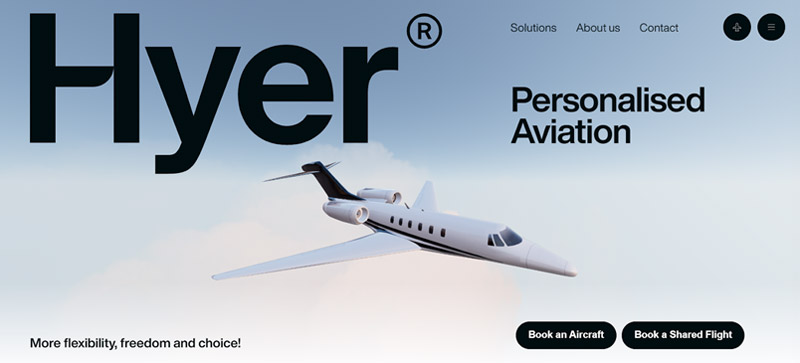
Image Source: https://www.flyhyer.com/
2. Nike
An e-commerce website for Nike showcases a variety of products from this world-renowned sportswear company.
It is worth noting that Nike uses a minimalist design and copy on its checkout page, allowing users to complete their purchases without registering.
Users are notified when their information has been correctly entered by a green checkmark displayed in the checkout interface. This allows them to know what’s been entered and how to proceed.
Furthermore, Nike’s checkout page auto-fills addresses so that users do not have to enter their information more than once, avoiding the possibility of abandoned shopping carts.
The checkout page of Nike is a good example of how minimal design can make a product more efficient. Consider simplifying checkout by automating time-consuming steps. Users can now see their information has been logged by each element reacting to their input.
3. Supima
Supma is an example of a minimalist website for a fashion and apparel company. The strong position of the negative space and the compelling hero image make this a captivating piece.
Negative space is combined with pastel colors, breaking the stereotype of minimalist designs in black and white. While maintaining a clean and uncluttered aesthetic, the white space permits the design elements to breathe and the colors to stand out.
A stunning icon image dominates Supima’s homepage, which entices visitors and creates a positive first impression. Besides providing a context for the website, it gives visitors a reason to stay on the site and explore Supima’s offerings.
Besides being visually appealing, Supima’s website also emphasizes functionality. In addition to its intuitive and user-friendly design, it provides easy navigation. Furthermore, a strong call-to-action (CTA) promotes interaction with the user and increases conversions.
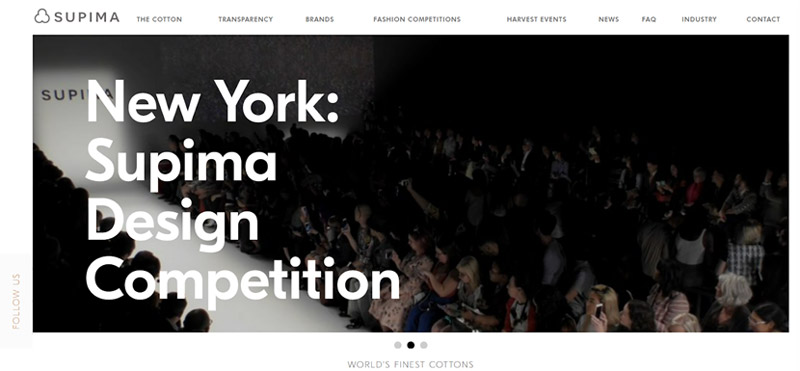
Image Source: supima.com
4. Rick Waalders
An acclaimed developer and designer in his field, Rick Waalders has received numerous awards for his outstanding work. An expert in his field, Waalders has become known for his eye for detail and passion for creativity.
The distinctive features of Rick Waalders’ web design include a bold typeface and many 3-D components. As part of his portfolio website design, he meticulously selected fonts and arranged them to add an extra touch of creativity.
Waalders utilizes advanced technology and creative solutions to achieve a sophisticated appearance in his 3D graphic design work. As a designer, he utilizes Cinema 4D, and as a developer, he uses JavaScript/React.
A combination of stylish visuals and an easy-to-use interface makes Waalders a perfect combination of design and technology.
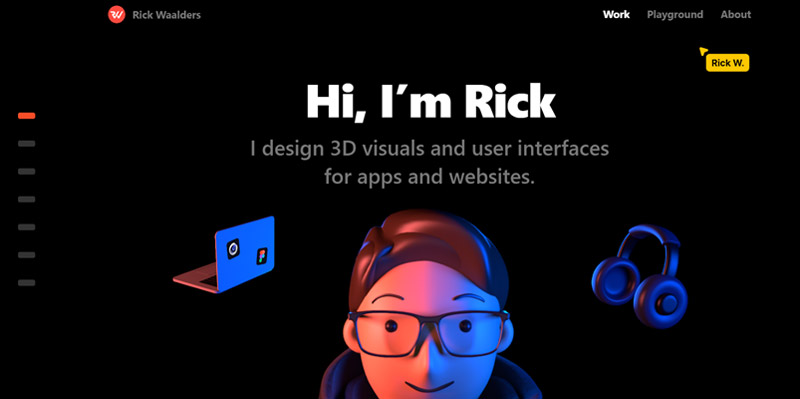
Image Source: rickwaalders.com
5. Swab the World
The website created by Swab the World uses motion graphics and geometric elements to create a compelling and visually appealing experience. Consider taking website design inspiration from the charity organization’s split-screen design for a twist on the hero image approach.
Multiple content elements are displayed simultaneously on a single screen using a split-screen layout. This way, you can convey relevant information, encourage exploration, and make navigation as simple as possible.
There is a delicate art in animation as it grabs visitors’ attention and enhances the site’s overall aesthetic appeal. Its geometric design also adds a sense of elegance and modernity to the overall appearance and feel of Swab the World.
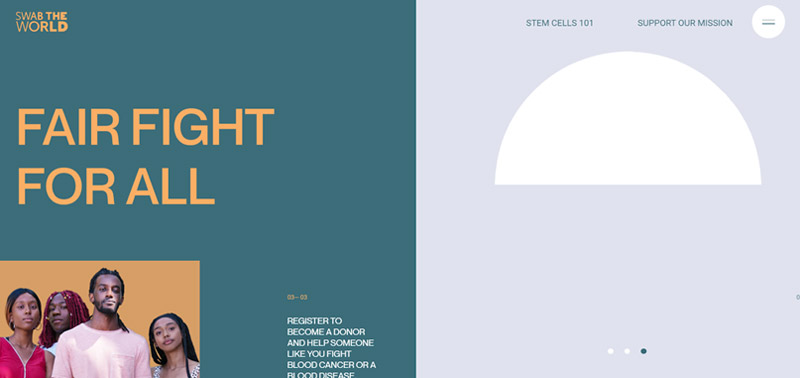
Image Source: swabtheworld.com/en
Wrapping Up
Customer experience is strongly influenced by web design. A website’s layout can make finding the information customers seek, navigating the site, and completing their intended tasks much easier. However, poorly designed websites confuse users, resulting in a poor user experience.
A website’s layout, typography, color scheme, and overall appearance all impact the customer’s impression of a company and its website. An easy-to-use, visually pleasing, and performance-oriented website will increase customer loyalty, possibly resulting in recurring sales.
We hope you get the important information in the article regarding web designs and how they impact users, and the examples mentioned also provide insight into an ideal website to attract and retain visitors.


